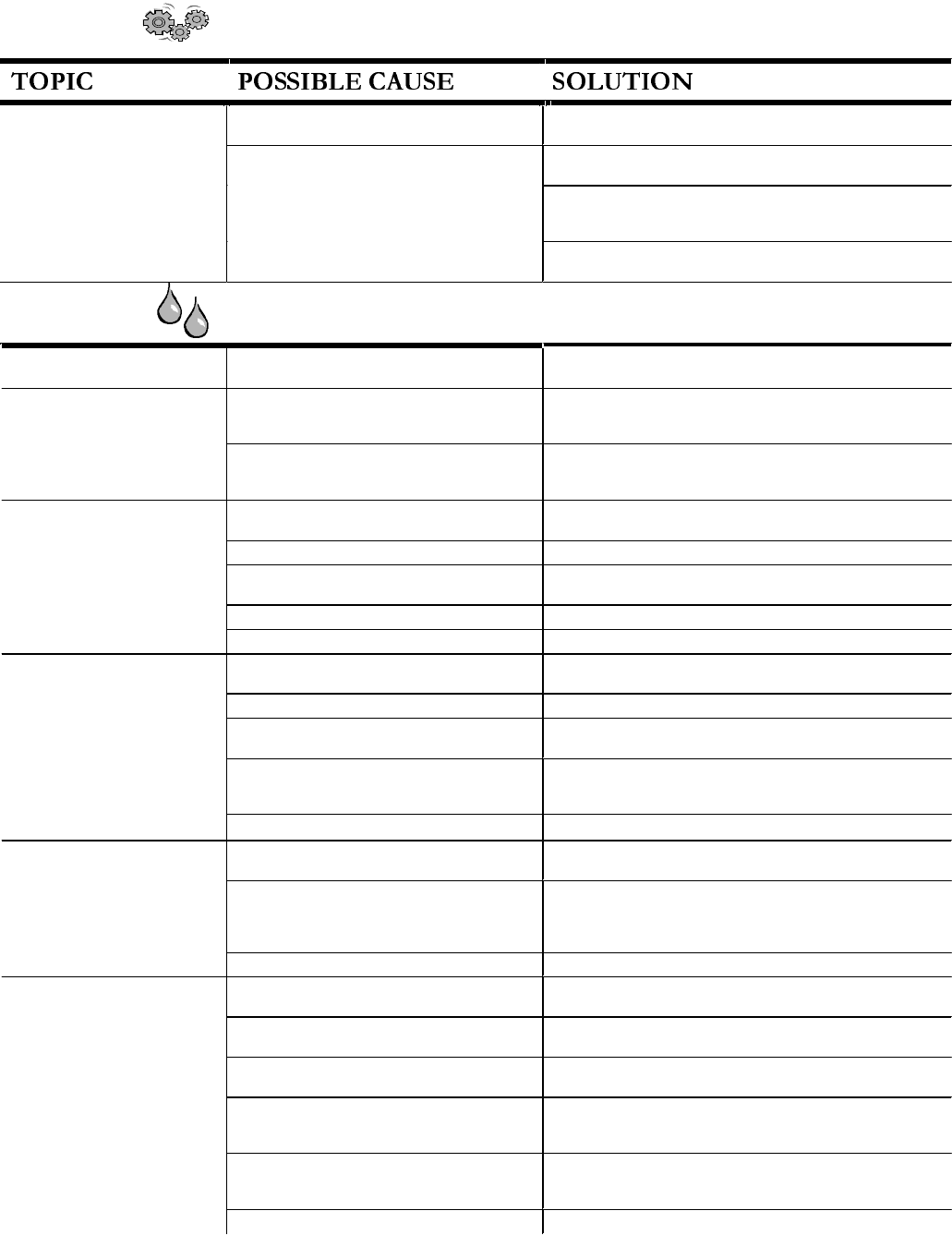
20
Trouble Shooting
OPERATION (continued)
Controls need to be adjusted. See the controls section in your owner’s manual for assistance
in how to adjust your controls.
Refrigerator is not level. See
Installation Instructions
for details
on how to level your unit
Check for internal obstructions that are keeping door from
closing properly (i.e. improperly closed drawers, ice buckets,
oversized or improperly stored containers or foodstuffs, etc.).
Refrigerator runs too
frequently (continued)
Door is not closing properly
Check gaskets for proper seal. Clean, if necessary, according
to cleaning instructions in owner’s manual.
ICE & WATER
Water appears cloudy Air or air bubbles in water. This is normal when first using dispenser and will disappear
with use.
Carbon dust from water filter cartridge. Initial water ejected through cartridge may contain harmless
carbon dust flushed from cartridge. Particles are safe for
consumption. Will disappear after the first few uses.
Particles in water and/or ice
cubes.
Concentrations of minerals in water will form
particles when water becomes frozen and
melts.
Particles are not harmful and naturally occur in water supplies.
Freezer door is not closed. Verify that freezer door is closed. Power is removed from the
control when freezer door is opened.
Refrigerator is not plugged in. Plug in unit.
Fuse is blown, or circuit breaker needs to be
reset.
Replace any blown fuses. Check circuit breakers for any
tripped circuits.
Power outage has occurred. Call local power company listing to report outage.
No indicator lights are lit on
dispenser control (some
models)
Refrigerator is in Sabbath Mode. See dispenser control instructions for further information.
Freezer door is not closed. Verify that freezer door is closed. Power is removed from the
control when freezer door is opened.
Controls are in lock mode. See dispenser control instructions for further information.
Water tank is filling. At initial use, there is an approximate 45-second delay in
dispensing while the internal water tank is filling.
Ice maker or ice maker-equipped unit has just
recently been installed or a large amount of ice
has just been used.
Wait 24 hours for ice production to begin and for ice maker to
restock after emptied.
Neither ice nor water is
dispensed when pads are
pushed (some models)
Water filter is clogged or needs to be changed. Change water filter.
Ice maker has just recently been installed or a
large amount of ice has just been used.
Wait 24 hours for ice production to begin and for ice maker to
restock after emptied.
Water pressure is too low. Low water pressure can cause valve to leak. Water pressure
must be between 20 to 100 pounds per square inch to function
properly. A minimum pressure of 35 pounds per square inch is
recommended for units with water filters.
Ice maker is not producing
enough ice or ice is malformed
(some models)
Water filter is clogged or needs to be changed. Change water filter.
Ice maker arm is not in correct position Confirm ice maker arm is down. See
Automatic Ice Maker
section in your owner’s manual for details.
Household water supply is not reaching water
valve
Check water connection procedure in your
Installation
Instructions
.
Copper or plastic tubing has kinks. Turn off water supply and remove kinks. If kinks cannot be
removed, replace tubing.
Water pressure is too low. Water pressure must be between 20 to 100 pounds per square
inch to function properly. A minimum pressure of 35 pounds
per square inch is recommended for units with water filters.
Check freezer temperature. See the controls section in your owner’s manual for assistance
on how to adjust your controls. Freezer must be between 0 to
2°F (-18 to –17°C) to produce ice.
Ice maker is not producing ice
(some models)
Ice bin is not installed properly See ice bin section for proper installation and alignment.


















